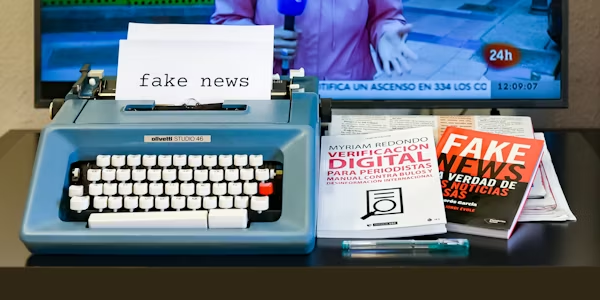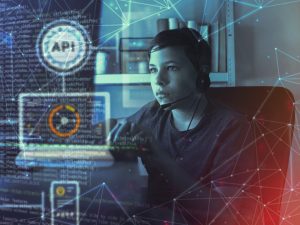Fake news is indeed a significant threat today in such a digital world. In the USA, the misinformation seems to have a direct impact on public opinion, acts in divisions of society, and even on elections. Some artificial intelligence (AI) here ironically becomes a major player in preventing this mess. Harnessing the power of the sophisticated algorithms and using the much-advanced machine learning techniques, AI tries to enter into the detection and analysis coupled with the prevention of the up to the point it is prevented from spreading out.
Fake News: Definition
- Fake news relates to the false or misleading news published in the name of real news. Most often, it is fabricated with the intension of manipulating public opinion, draw clicks, and propagate some agenda.
- Blogs, social media pages, and even mainline news media may sometimes, and with no will, become unwilling hosts of such kind of misinformation.
- Contrary to the mainstream, AI offers novel, innovative solutions to combat fake news. They include the following key ways of using AI technology in combating in the USA context.
Detecting Misinformation

AI tools analyze enormous datasets to identify false news:
- They look for indications such as startling headlines, strange wording, and unfit paragraphs relative to the rest of the content within the article. For instance, systems like Google Fact Check, as well as Facebook’s AI models, use natural language-processing techniques to help identify violations in the credibility of a news article.
- Automating Fact-Checking Using Artificial Intelligence
Artificial intelligence can also create a reference for the various claims found in articles in comparison with factually verified databases. - Snopes and PolitiFact are two examples of such automated fact-verifiers that include some elements of AI for their efforts towards rapid and clear verification of facts from their base. This reduces the time extent initial fact-checkers spend on verification from a human perspective.
Detection of Deepfakes.
Deepfakes are manipulated videos or images that can spread false narratives:
- AI models, such as Microsoft’s Video Authenticator, analyze visual and audio data to detect alterations. These tools are crucial in stopping the spread of misleading multimedia content.
Monitoring Social Media Platforms
- Social media is a primary channel for dissemination.
- AI algorithms monitor platforms like Twitter, Facebook, and Instagram to detect suspicious activity, such as bot accounts or trendings stories. Once identified, these platforms can remove or flag falseinformation.
HAI Detects Fake Newsow
AI uses several techniques to identify and stop Here are some of the most common:
- Natural Language Processing (NLP): NLP allows AI to understand and analyze text for bias, tone, and credibility. It helps distinguish between factual reporting and opinion-based or fabricated content.
- Sentiment Analysis: By analyzing the emotional tone of an article, AI can detect exaggeration or manipulation, which are common in fake news.
- Network Analysis: AI maps the spread of news articles and identifies patterns that suggest coordinated misinformation campaigns.
Real-World Applications in the USA
AI’s fight against fake news isn’t just theoretical. It’s being applied in various sectors:
Election Integrity:
- During elections, misinformation can influence voter behavior. AI tools are used to monitor and remove fake news about candidates or voting processes. In the USA, platforms like Twitter introduced AI systems to label false information during the 2020 elections.
- Public Health Campaigns:The COVID-19 pandemic saw a surge in fake news about treatments and vaccines. AI played a critical role in identifying and debunking these claims. Companies like IBM Watson worked with healthcare providers to provide accurate information.
Education and Awareness:
Tech companies and nonprofits are using AI to educate people about fake news. Tools like “News Guard” use AI to rate the reliability of news websites, helping users make informed decisions about the content they consume.
Benefits of AI in Fighting Fake News
The use of AI in tackling offers several advantages:
- Speed: AI processes information faster than humans, enabling real-time detection of fake news.
- Scalability: AI can analyze millions of articles, social media posts, and videos simultaneously.
- Accuracy: With advanced algorithms, AI reduces errors and identifies subtle patterns that humans might miss.
Challenges and Limitations
Despite its effectiveness, AI faces challenges in combating fake news:
- Evolving Tactics: Misinformation creators constantly develop new strategies to bypass detection.
- Bias in Algorithms: AI systems can sometimes reflect biases present in the training data, leading to inaccurate assessments.
- Privacy Concerns: Monitoring social media and analyzing user behavior raises ethical issues around privacy and surveillance.
- Resource Intensive: Developing and maintaining AI systems requires significant investment in technology and expertise.
The Future of AI in Fighting Fake News
The future looks promising as AI continues to evolve. Researchers are developing more sophisticated AI models that can:
- Detect fake news in multiple languages.
- Identify the original source of misinformation.
- Predict the potential impact of a fake news story.
- Collaboration between tech companies, governments, and educational institutions will be key to improving AI’s capabilities. In the USA, initiatives like the AI for Good program are already fostering such partnerships.
Conclusion
AI is revolutionizing the fight against fake news in the USA by offering innovative tools to detect and prevent misinformation. Although challenges remain, the progress made so far is significant. By continuing to invest in AI technology and promoting digital literacy, the USA can build a more informed and resilient society. In this age of information, the role of AI is not just important—it is essential.



